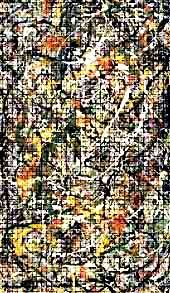Creativity
Creativity and Mental Illness
Creativity is highly adaptive and the actual processes involved are all healthy.
Posted March 8, 2015 Reviewed by Kaja Perina
Not long ago, I decided to re-read a novel by Thomas Mann about the experience of chronic illness. I felt immersed in a sense of contemplation within seemingly endless time.
Both moving and enlightening were the metaphorical power of this masterpiece, its insights about life and death, and its elegance of literary style. Other types of artistic productions—visual, musical, and dance—similarly draw us into meaningful looking, listening, and thought. All, together with outstanding scientific discoveries, enhance and change our lives, and are results of creativity, defined as the production of something both new and valuable. Given the magnitude of creative achievement, I am often perplexed about the recurring tendency in recent history to connect creativity with mental disability and illness.
It cannot be denied that a number of well-known creative people, primarily in the arts, have been mentally ill—for example, Vincent Van Gogh, Virginia Woolf, Robert Schumann, Robert Lowell, Sylvia Plath. The list has recently been made, in various ways, questionably large.
Psychiatric diagnoses of eminent people have been derived not from clinical sources but from general and popular biographies revealing apparent clay feet of creative heroes, unproven gossip and hearsay, and a field called pathography, in which both literary and psychological analysts describe correlations between artists’ psychological constitutions and pathological elements they see in subject matter or characters. Other studies have purportedly found psychopathology in people attending art or writing classes or achieving positive scores on various creativity measures.
The confused beliefs and purported findings have primarily arisen because both creativity and mental illness involve deviations, sometimes fairly extreme ones, from normative modes of thought. Symptoms of mental illness differ from normal thinking and behavior, and creativity requires special or uncommon capacities. But there are sharp differences in effects; mental illness symptoms—compulsions, obsessions, delusions, panic attacks, depression, and personality disorders-deviate in stereotyped and frequently banal ways, whereas creativity involves novel and rich results. A common claim is that extreme euphoria and productivity are features of both creative work and bipolar illness. With the illness, however, these features are involuntary, devoid of judgment, and distorted, whereas creative artists’ productivity is purposeful, and euphoria results almost always from exceptional accomplishment. Suffering is an intrinsic component of mental illness but, despite traditional romantic beliefs about creative people, such disruption seldom contributes directly to creative inspiration. Suffering may come from all-too-frequent lack of recognition and its consequences, neither a direct cause nor an effect of mental illness.
The list of mentally ill creators who were successful should induce hope but not treatment resistance in suffering patients. Although comprised of an impressive membership, the list is dwarfed by the very large number of highly creative people both in modern times and throughout history without evidence of disorder, for example, Czeslaw Milosz, Henry Moore, Sigrid Undset, Jane Austen, Anton Chekhov, George Eliot, John Milton, Johann Sebastian Bach, including William Shakespeare as much as we know of him. All very likely have had problems like other human beings, but here’s the rub: Was the author of Hamlet’s suicide-contemplating soliloquy depressed? As a matter of complex empathy such intersecting conditions are hardly necessary and probably were unlikely.
Studies using test or clinical assessments have not proven a connection between creativity and mental illness.

Almost all have had methodological and conceptual inadequacies: absent or poor controls, investigator bias, unreliable testing tools. None have demonstrated validity with respect to actual creative performance. Shared deviations from the normative—unusual and remote associations or preferences, and divergent thinking (as opposed to convergent thinking toward a single correct solution)—perfuse the criteria used.
The solution to the conundrum of mental illness in creative individuals appropriately lies, in the nature of the creative processes themselves. If the factors directly producing creations were in some way derived from, or even facilitated, by illness, there would then be a necessary connection. From many years of objectively controlled research interviews and controlled experiments, I have therefore discovered three specific cognitive creative processes: sep-con (sep=separate; con=connected) articulation, janusian process, and homospatial process(see previous posts). These processes are all healthy and adaptive.
My systematic research has consisted of intensive interview series focused on work in progress with a large number of outstanding literary prizewinners and Nobel laureates in the sciences throughout Europe and the USA. In addition, an extensive controlled experiment regarding the findings showed that Nobel laureates in science and other creative persons scored statistically significantly higher on features of the janusian process than patients with a wide range of psychiatric diagnoses, strongly differentiating creativity and mental illness. (Rothenberg, A. Psychopathology and creative cognition. A comparison of hospitalized patients, Nobel laureates, and controls. Arch. Gen. Psychiatry, 1983; 40:937‑942.)
The creative janusian process in the reported experiment consists of actively conceiving and using multiple opposites or antitheses simultaneously. This simultaneous opposition is neither the simple combination nor the blending of different elements, but under logical, clear and healthy states of mind, previously considered antagonistic and opposing beliefs, ideas, or actualities are formulated as coexistent.
Jackson Pollock, the father of abstract expressionism, was clinically diagnosed with bipolar illness and alcohol dependence. In the 1930s, he engaged in Jungian analytic therapy, which commonly involves the analysis of drawings. He submitted a large number all derivative
from other artists: surrealists, Mexican muralists, Picasso, and his mentor Thomas Hart Benton. (see example Untitled,above left), none that gave any evidence of his own breakthrough artistic mode. It was not until the summer of 1939, when he was improving, by his own statement devoid of moodiness and anxiety and attending nparties where he was the only non- drinker, that he introduced abstract expressionist painting (see example, below, left).

He explained these artworks as both obscuring an image and expressing it at the same time, a janusian formulation developed during his period of remission and low anxiety.
Like the janusian process, all of the discovered creative processes are goal directed, productive, and under rational governance, the hallmarks of healthy, adaptive functions.Although they deviate from ordinary thinking and are difficult to use, they are not, like symptoms of mental illness, involuntary and disruptive.
These symptoms tend to block or derail creativity, whereas mental health is facilitating. When a creative person is mentally ill, creative production must be carried out during periods of low symptom activity and anxiety.
Other factors also are involved in creativity. Some of the shared ones between outstanding creators and those who perform creatively in everyday activities are self-affirmation, aversion to dogma, flexibility, and affinity for difference and novelty. Creativity of all types is a premier form of psychological adaptation, the effect of a healthy muse, because it involves the ability to change and improve all features of the environment.
Link to http://www.the lancet.com Creativity: The Healthy Muse. Medicine and Creativity Vol 368 December 2006 S9




